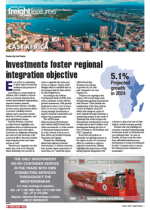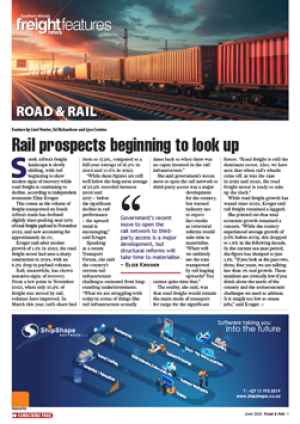SACO CFR is expanding its presence and broadening its range of services in East Africa amid the region's ongoing growth and development.According to Bevill J Braganza, general manager for SACO Shipping East Africa, the company now offers 12 import services into Mombasa, Kenya, and seven import services into Dar es Salaam in Tanzania from 10 countries, with onward forwarding to Uganda, Rwanda, the Democratic Republic of the Congo (DRC), Burundi, South Sudan, and Malawi. "Plans are under way to introduce warehousing, cold chain logistics, and less-than-container-load (LCL) exports from Kenya and Tanzania," he told Freight News.Kreeson Moodley, the company's South African trade lane manager, said SACO CFR had also expanded its services to include door-to-door delivery for LCL cargo from Mombasa into cities like Kigali, Kampala, and Nairobi. This initiative was in response to the escalating demand for delivery services reaching inland destinations across East Africa.It comes as volumes in the region continue to grow on the back of regional economic growth. "From a trade perspective, the growth potential is exponential. However, the pace of this growth might not match initial expectations due to the complexities of political stances and inter-country relationships in the region," said Braganza. "Economic growth in East Africa continues to experience an upward trajectory and is anticipated to remain robust in the foreseeable future. Despite renewed investment interest within the region, factors such as volatility and corruption do, however, compel investors to approach opportunities cautiously."Braganza said building and construction were buoyant, with a revived boom in tourism. "The emergence of market opportunities in East Africa drives investment into crucial sectors such as infrastructure, manufacturing, and transport services. Transport, in particular, stands out as a key enabler, facilitating the region's ability to capitalise on the present opportunities and foster sustained growth."Despite the promising prospects, the region faces its share of challenges. The volatility of the US dollar has periodically hampered economic growth and development, contributing to heightened government debt levels across countries in the region. Divergent governance frameworks and shifting policies further compound challenges, impeding market momentum and complicating the importation process for goods.Moodley highlighted additional logistical hurdles confronting the region, including port congestion and insufficient capacity to accommodate the volumes passing through its ports. Moreover, adverse weather conditions frequently prompt carriers to skip ports as they prioritise schedule reliability. Addressing these challenges necessitates infrastructure enhancement and acquiring new equipment to mitigate the prevalent delays."Compromised infrastructure is by far the biggest challenge in the region," said Braganza. "The ongoing development of road networks notwithstanding, border movements and customs clearances often encounter delays. Although efforts to streamline these processes through online platforms are under way, frequent power outages and inadequate internet connectivity exacerbate operational disruptions."Both Braganza and Moodley maintain that opportunities far outweigh any challenges. "There is immense development potential across various industries, spanning power, technology, transport, IT, and manufacturing. Moreover, trade lanes are continuously expanding and evolving, offering further opportunities for growth and development in the region."Braganza noted that volumes in East Africa were closely tied to currency and freight rate f luctuations. Nonetheless, the region's constantly evolving population has driven a surge in demand for imports, while the export market for local produce has expanded to meet international demand for goods.

